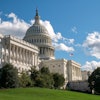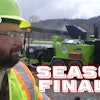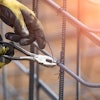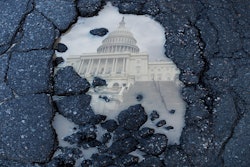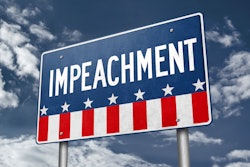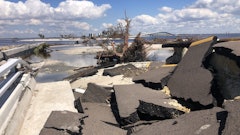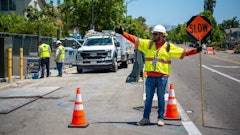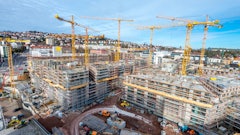
From highways and bridges to air traffic control and water resources, and from energy production to broadband internet access, nearly every facet of the country’s infrastructure is below global standards and deteriorating daily.
While President Biden has made it clear he wants infrastructure to be a priority in Congress, our leaders in Washington continue to fight over the details of what an infrastructure package would look like and how to pay for it. Meanwhile, the condition of our roads, bridges, ports and other critical infrastructure continues to worsen.
The Committee for Economic Development of The Conference Board (CED) has released a new, comprehensive report with several policy recommendations to address this growing crisis. With eighty percent of Americans support rebuilding our nation’s infrastructure—more than almost any other top issue facing the nation—and roughly two-thirds of Americans rating their own local roads as in fair or poor condition, now is the time to act.
“Modernizing our infrastructure is one of the few issues that enjoys broad bipartisan support, so both sides can work together to comprehensively address this glaring issue,” said Lori Esposito Murray, President of CED. “The large number of areas that fall under the infrastructure rubric demonstrates its importance to our economy. A sharp focus on its role and key issues can lead the nation toward faster economic growth and job creation, environmental protection, equality of opportunity, shared prosperity, and eventual public savings.”
Not only is infrastructure a bipartisan issue, but it also crosses public-private lines in unexpected ways. While government is sometimes believed to be the source of all infrastructure weaknesses, private-sector responsibility is more salient in some areas.
The report presents the following recommendations for a bipartisan, comprehensive, cost-efficient and fiscally sustainable infrastructure program:
- Full funding of prepandemic infrastructure projects will restore jobs, and further jobs will be created as greater priority is devoted to infrastructure construction and maintenance. But short-term job creation should be a result of long-term investment value, rather than serve as an end in itself.
- Long-term federal fiscal sustainability will create more room for enduring investment.
- Rigorous cost-benefit analysis is essential. The federal government can provide technical expertise, but locally based on-the-ground input as to both costs and benefits is needed as well.
- Consideration of long-term risks, such as climate risk and resilience, must be part of the evaluation process for long-term investments.
- Long-term investment is needed, but maintenance and renewal must be allowed to compete for infrastructure dollars on the basis of benefits and costs.
- Federal, state, and local decision makers (including across states and localities) must coordinate to avoid duplication and delay during project approvals.
- Infrastructure decisions must anticipate changing technologies such as autonomous vehicles and advancing digital communications.
- Research into infrastructure investment technology will be needed to improve productivity and reduce costs (such as in longer-lasting highways with thicker paving).
- Maximum competition is needed to get the best infrastructure at the least cost.
- Regulation must promote competition. Streamlining regulatory procedures and cutting red tape across federal, state, and local governments is key to increasing investment, decreasing cost and maximizing efficiency.
- Use the best funding tool for each unique project. Where it is feasible, “user pays” financing can steer infrastructure investment to where it provides the greatest value. Where public-private partnerships are appropriate—which is for only some infrastructure—they can supplement public expertise and resources and facilitate consideration of maintenance and full-life-cycle cost.
- The Highway Trust Fund must be put on a sustainable footing. In the short run, that will require increases in the fuel tax. The longer term poses significant funding challenges, assuming a continuing shift toward renewable fuels that do not bear the current fuel tax. Options to make up the differential include utility taxes, or possibly a mileage charge at least as a partial substitute for the fuel tax, but any alternative in the intermediate term must not negate totally the environmental incentives of the fuel tax.
- The electricity sector needs reliability, which requires some redundancy and excess capacity, along with rigorous evaluation and maintenance of the power grid and distribution network. Investing in developing better battery technology is essential. Climate risk must be factored into decisions about long-lived assets. Synergies between distributed power generation and electric vehicles are among the many technological uncertainties that must be considered.
- Privatization of air traffic control and congestion charges for slots at airport gates are worthy of serious consideration to reduce congestion and speed travel.
- Access to quality broadband has become a necessity of citizenship, like public education (of which broadband has become a prerequisite), postal delivery, telephone service, and electrification. Broadband is also a building block for individual prosperity and a tool to fight inequality. Beyond emergency response to the current pandemic, policy should ensure that broadband is accessible to every citizen and that it is affordable.
- Failures of water systems, both drinking water and wastewater, have harmed the public health. Population migration and shifting demand have challenged new and old communities alike, while aging systems have wasted scarce water. Federal lending programs for investment and improvement must be expanded.
You can read the full report here.

